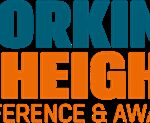JLG stands for Joint Liability Group, an informal association of 4 to 10 individuals who come together with the purpose of securing bank loans either individually or through a group lending mechanism. The core principle behind JLGs is mutual guarantee, meaning that members collectively take responsibility for loan repayment, ensuring greater financial discipline and creditworthiness. This system is particularly beneficial for individuals who lack collateral or formal credit history, enabling them to access financial services that might otherwise be out of reach.
Understanding Joint Liability Groups (JLGs)
1. Purpose and Functioning
A Joint Liability Group operates on the foundation of shared financial responsibility. The members, often small farmers, entrepreneurs, or self-employed individuals, apply for loans from banks or microfinance institutions. Since the risk is distributed among the group, financial institutions are more willing to lend, even to individuals with minimal credit history.
The two primary ways in which JLGs function are:
-
Individual Lending Model: Each member applies for a loan separately, but the group provides a collective guarantee for repayment.
-
Group Lending Model: The entire group applies for a loan together and shares the repayment responsibility.
In both cases, the mutual accountability among members encourages responsible financial behavior, reducing default risks.
2. Key Benefits of JLGs
JLGs offer several advantages, especially in rural and underserved financial sectors:
-
Improved Credit Access: Individuals with little or no credit history can secure loans, which would otherwise be difficult under traditional banking systems.
-
Lower Interest Rates: Due to reduced risk for lenders, interest rates are often lower compared to individual unsecured loans.
-
Financial Inclusion: Helps marginalized communities, such as small farmers and women entrepreneurs, gain access to credit and banking services.
-
Encourages Financial Discipline: Since all members are liable for repayment, there is a strong incentive to make timely payments and maintain good credit standing.
-
Promotes Economic Growth: JLGs empower small businesses and agricultural activities by providing necessary financial support, leading to economic development.
3. JLGs in Different Sectors
JLGs are commonly utilized in:
-
Agriculture: Farmers form JLGs to obtain loans for seeds, fertilizers, equipment, and other necessities.
-
Microenterprises: Small business owners and self-employed individuals use JLGs to secure working capital.
-
Women’s Empowerment Programs: Many microfinance initiatives focus on forming JLGs for women entrepreneurs, enabling them to start or expand their businesses.
4. Challenges and Limitations
While JLGs provide significant financial benefits, they also face some challenges:
-
Risk of Default: If one member fails to repay, the burden falls on the rest of the group.
-
Group Conflicts: Disagreements regarding financial responsibility and repayment can arise among members.
-
Limited Loan Size: Since JLGs are often designed for small-scale financing, large funding requirements might not be met.
Joint Liability Groups play a crucial role in promoting financial inclusion and economic empowerment, particularly for individuals who lack traditional banking access. By fostering a system of mutual guarantee, JLGs not only enable easier credit access but also encourage responsible borrowing and repayment. Despite certain risks and limitations, they remain a powerful tool for economic development, especially in rural and underserved communities.




